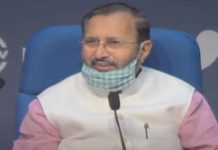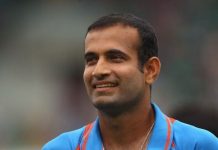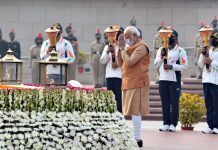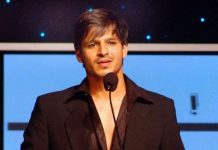Though the Congress found support from other opposition parties in slamming the Centre inside the Parliament mainly over the Adani issue, the grand old party faces a stiff challenge as it endeavours to become a major force among the anti-BJP block, writes Amit Agnihotri
Post Rahul Gandhi’s Bharat Jodo Yatra, the Congress has become aggressive and is trying to keep the opposition flock together ahead of the 2024 national elections and the nine assembly polls in 2023.
However, the grand old party will have to focus on restrengthening the organization and winning more states to be able to play the role of the opposition anchor.
The reason is that the regional parties too have become aspirational and some of them have recently been trying to forge a grouping of state parties often dubbed as the Third Front in Indian politics.
In this light, it remains to be seen to what extent the Congress would be able to unite the opposition parties as the opposition parties often come together during the Parliament session but then go back to their own political calculations which are solely based on maximising their space in the respective states.
The same has been witnessed during the ongoing Parliament session. Though the Congress had been targeting the Adani group for long, the recent controversy provided an opportunity to the grand old party to unite the various like-minded parties and demand a discussion on safeguarding the interests of small investors whose money in the Life Insurance Corporation of India and the State Bank of India had been invested in the private conglomerate.
The Congress-led opposition grouping alleged that the Adani group had lost huge value at the stock exchange after a damning report from the US-based short-seller Hindenburg Research, questioning the finances of the corporate giant, surfaced.
The opposition alleged that the Prime Minister was friends with Gautam Adani, who heads the large business conglomerate, and had helped him grow in size phenomenally over the past eight years.
As the Congress became the pivot of opposition unity inside the Parliament, even the TMC and AAP, which have been critical of the grand old party in the past, attended the strategy sessions convened by the Leader of the Opposition in the Rajya Sabha, Mallikarjun Kharge, who also heads the grand old party.
The government’s initial refusal to debate the issue led to the loss of several work days as an angry opposition stalled both the houses of Parliament.
However, the opposition later agreed to debate a motion to thank President Droupadi Murmu for her joint address to both the Houses of Parliament at the start of the budget session January 31.
In an aggressive speech, Rahul Gandhi, who opened the debate from the opposition side, made a scathing attack on the Prime Minister and questioned his links with Adani over the past decades.
In turn, the PM hit back at the Congress which alleged that the premier talked about everything else but avoided the issues flagged by Rahul.
The Congress was also furious over the removal of parts of Rahul’s and Kharge’s speeches in the the Lok Sabha and the Rajya Sabha respectively, saying the Chair’s move was akin to “cremating democracy in Parliament.”
The Congress also protested outside the offices of the LIC and the SBI across the country on February 6 to amplify its demand of either a Supreme Court led or a Joint Parliamentary Committee probe against the Adani group.
Over the past years, the Congress has been careful to point out that while it targets the PM for favouring a few of the big corporates, the grand old party was not against business per se. Rahul had himself clarified that he was against monopolies not corporates and wanted a fair distribution of wealth among the population.
Though the Congress found support from other opposition parties in slamming the Centre inside the Parliament mainly over the Adani issue, the grand old party still faces the challenge of becoming a major force among the anti-BJP block.
Yatra and opposition unity
Though the yatra was not planned with an eye on forging opposition unity, the footmarch was noted for the presence of several allies of the grand old party, which was on a mission to revive itself ahead of the 2024 national elections after having suffered a series of electoral reverses over the past years.
DMK chief and Tamil Nadu chief minister MK Stalin was part of the yatra launch at Kanyakumari while Shiv Sena Uddhav Balasaheb Thackeray leader Aditya Thackeray and Nationalist Congress Party MP Supriya Sule joined in Maharashtra. People’s Democratic Party leader and former chief minister Mehbooba Mufti and National Conference leader and former chief minister Farooq Abdullah joined the march in Jammu and Kashmir to show their solidarity with the central theme of the yatra- to unite the country against hatred.
In between, Samajwadi Party and Bahujan Samajwadi Party did not join the yatra in Uttar Pradesh but sent their wishes to Rahul. Rashtriya Lok Dal had sent a party delegation while actor turned politician Kamal Hasan too walked beside Rahul in Delhi.
The concluding event of the yatra at Srinagar on January 30 was planned as an opposition conclave by the Congress managers who thought the foot march had placed the grand old party in a pole position among the opposition space.
But the attendance of the like-minded parties did not turn out to be as desired. Out of the 23 parties that had been invited by Congress chief Mallikarjun Kharge, only eight turned up in Srinagar including DMK, CPI, National Conference, PDP, RSP, IUML, JMM and VCK. BSP MP Shyam Singh Yadav was also there but his party said he went there in his personal capacity.
The Congress leaders who had projected the January 30 rally as a big event, later revised their strategy as they realised that many of the regional parties chose to skip the show due to political compulsions.
In many states, the regional parties fought the polls against the Congress and did not want to be seen as an ally in the yatra. Also, these parties were not fully convinced over the political dividends the yatra would bring to the grand old party in the 2024 national elections.
On its part, the Congress batted for greater opposition unity ahead of the 2024 Lok Sabha elections but repeatedly said that the foot march was entirely a party event.
At the same time, the grand old party also stated that no opposition unity was possible without the Congress and that there was a need for the like-minded parties to come together on a single platform to take on the BJP, which was allegedly playing divisive politics and subverting the Constitution.
Third Front?
Even as the Congress emerged more confident from the yatra, the grand old party countered parallel moves by some regional players who wanted to set up a federation of state parties to counter the BJP in 2024.
Notably, Telangana chief minister K Chandrasekhar Rao, who recently renamed his TRS party as the Bharat Rashtra Samithi to project himself as a national player, organised a meeting with opposition leaders at Khammam on January 18.
SP leader and former UP chief minister Akhilesh Yadav, AAP leaders Delhi chief minister Arvind Kejriwal and Punjab chief minister Bhagwant Mann, Kerala chief minister Pinarayi Vijayan, and CPI leader D Raja participated in the meeting which was billed as a new opposition grouping in the offing. However, the root of KCR’s efforts lie in Telangana where the BJP has been trying to make inroads to emerge as a challenger to the chief minister.
Ater the joint opposition protests inside the Parliament House complex over the Adani issue, KCR met Kejriwal in Delhi a day before MPs of both BRS and AAP staged a joint protest to demand a probe in the matter.
This was a separate show of solidarity by the two regional parties, days after the Congress had rallied a range of smaller parties to target the business conglomerate.
A few months ago, KCR had also met Bihar chief minister and JD-U leader Nitish Kumar in Patna with similar objectives. Nitish Kumar, a former BJP ally, is now in alliance with the Congress and the RJD. When the realignment of forces had happened in Bihar, many had projected that Nitish Kumar would play the role of an opposition unifier ahead of the 2024 national elections.
Though Nitish Kumar is known to be an unpredictable ally, for now he has put himself out of the prime ministerial race ahead of the next Lok Sabha polls where the Congress would certainly like to project Rahul Gandhi.
Already, West Bengal chief minister Mamata Banerjee and Delhi chief minister Arvind Kejriwal have prime ministerial ambitions which may clash with the Congress’ plans for Rahul.
When asked, Rahul carefully sidestepped the issue by saying that a common agenda for development was needed much more for any opposition grouping to succeed than worrying about who would be the prime ministerial face.
That is a good way to begin but the plan needs more energy.













